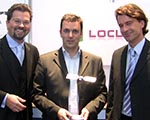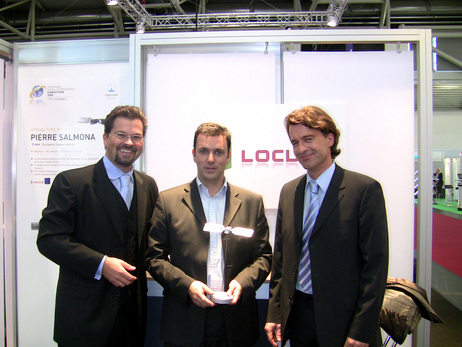Mobile-Based Museum Guide
Published Jan-27-10Breakthrough:
A small portable mobile device that uses satellite technology to help navigate inside large buildings.
Company:
Anwendungszentrum GmbH Oberpfaffenhofen and SYSTEMS, Germany
The Story:
 To access the best brains around the world and to come up with innovative and practical applications in satellite navigation Anwendungszentrum GmbH Oberpfaffenhofen (an aerospace and satellite company) and partners host a global annual open innovation competition.
To access the best brains around the world and to come up with innovative and practical applications in satellite navigation Anwendungszentrum GmbH Oberpfaffenhofen (an aerospace and satellite company) and partners host a global annual open innovation competition.Many current devices including antilock brake systems, cooling suits for Formula 1 drivers and satellite navigation systems were originally developed for use in space. The European Satellite Navigation Competition uses open innovation as a way of motivating potential contributors to think about commercial applications of European space research; specifically to come up with a brand new satellite navigation device. The remit is broad and ideas can be applicable to fields as disparate as the video games and automotive industries.
Competition Lift Off
The competition began in the Free State of Bavaria in 2004 and since then has expanded to include many European countries, as well as Australia and Taiwan.
To inspire teams a Euro 500,000 (approx USD $800,000) is offered which is made up of 17 regional prizes and an overall winner’s check of Euro 20,000 (USD $32,000) as well as start-up assistance.
2008 was something of a record year for the competition with a total of 525 submissions. From those, 239 ideas from went forward for further evaluation by an international panel of industry experts.
Special Prizes
A number of special prizes were also on offer including the European Space Agency´s (ESA) Innovation Prize. "By awarding the ESA special prize we want to do more than just encourage creative minds and lateral thinkers to develop their ideas; we want to provide the winner with the unique support of ESA Business Incubation, which can bring their ideas to life," said Frank M. Salzgeber, Head of ESA's Technology Transfer Programme Office (TTPO).
The space agency wanted to take advantage of open innovation to encourage teams and companies to realize the transfer potential of satellite technology. It was looking for the best ideas for the use of satellite navigation systems that could be implemented quickly, and would have a long-lasting influence.
ESA Winner
The winner of ESA´s prize was Pierre Salmona from the French start-up company, Locus. His innovation is a mobile-based museum guide which uses WiFi and stationary pseudo satellites to allow indoor navigation. Pseudo satellites (also called psuedolites) are ground-based satellites that are used when signals from orbiting or geostationary satellites are not available.
Salmona received Euro 10,000 (USD $16,000) for his idea, as well as access to ESA´s technical experts and one of its Business Incubation Centers to help it get off the ground as quickly as possible.
ESA is a strong supporter of open innovation and believes that it is applicable to almost any business field from entertainment to flood defenses, but the encouragement and support must be there to allow people to think out of the box.
Salzgeber adds: "Businesses for the future need interdisciplinary solutions. For instance, in a few years, satellite navigation, Earth observation and robotics will be used to further optimize agricultural processes. The European space program can provide many of these enabling technologies."
Next Story »

